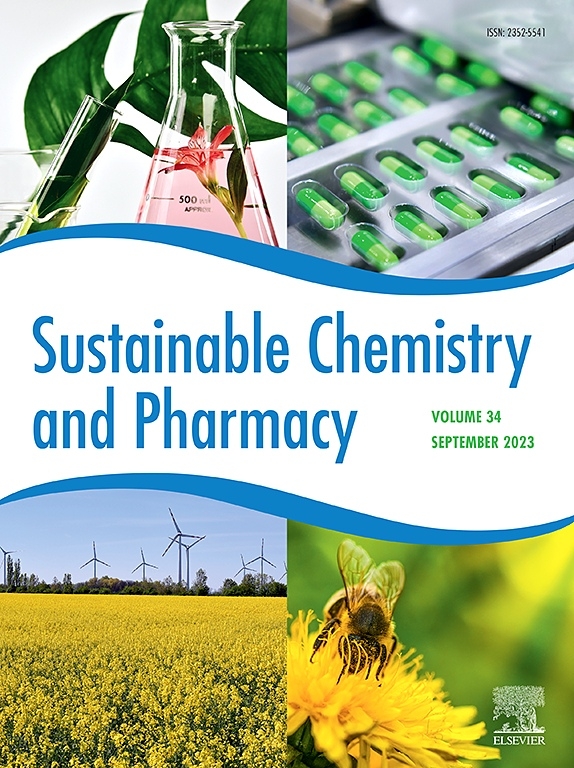Yeast-filamentous fungi co-culture: A circular bioeconomy approach for distillation stillage treatment and revalorization
IF 5.5
2区 化学
Q2 CHEMISTRY, MULTIDISCIPLINARY
引用次数: 0
Abstract
Tequila vinasses are a waste generated during tequila production, common among all distilled products, that causes environmental issues such as eutrophication and soil toxicity. To promote the sustainable management of tequila industry waste, this study proposes a systems-based approach centered on the bioconversion of vinasse using microbial consortia. The objective is to develop a process that, besides mitigating environmental impact, generates a high-nutritional value byproduct for animal feed, thereby closing the production cycle and fostering a circular economy in the region. This study conducted various aerobic treatments in both mono-cultures and co-cultures, using six different strains: C. utilis, R. mucilaginosa, K. marxianus, A. niger, A. oryzae, and R. oligosporus or contaminant removal while developing added value products such as high-protein biomass production and contaminant removal. The C. utilis and A. oryzae co-culture showed the best results at the tube-scale cultures and was subsequently scaled up along with the respective mono-cultures. Kinetic studies over 72 h demonstrated removal efficiencies of up to 63.52 % for TN, 86.87 % for P, 46.21 % for COD, and −1.46 % increase in total phenols concentration. Co-culture biomass quantity at steady state was modeled using the biphasic Zwietering-modified Gompertz model, with = 0.0758 and = 0.0827, reaching 4.25 g L−1 after 150 h. Biomass achieves a high-value protein content of 47.27 g kg−1.
酵母-丝状真菌共培养:蒸馏蒸馏液处理和再增值的循环生物经济方法
龙舌兰葡萄酒是龙舌兰酒生产过程中产生的废物,在所有蒸馏产品中都很常见,它会导致环境问题,如富营养化和土壤毒性。为了促进龙舌兰酒工业废弃物的可持续管理,本研究提出了一种基于系统的方法,以利用微生物群落进行酒糟的生物转化为中心。目标是发展一种工艺,除了减轻对环境的影响外,还能产生高营养价值的动物饲料副产品,从而缩短生产周期,促进该区域的循环经济。本研究在单培养和共培养中进行了各种有氧处理,使用了6种不同的菌株:C. utilis、R. mucilaginosa、K. marxianus、A. niger、A. oryzae和R. oligosporus或污染物去除,同时开发了高蛋白生物质生产和污染物去除等附加值产品。利用真菌和米芽孢霉共培养在管级培养中效果最好,随后随各自的单培养而扩大。72 h的动力学研究表明,TN的去除率高达63.52%,P的去除率为86.87%,COD的去除率为46.21%,总酚浓度提高了- 1.46%。稳态共培养生物量采用双相Zwietering-modified Gompertz模型,μmax1 = 0.0758, μmax2 = 0.0827, 150h后达到4.25 g L−1,生物量达到47.27 g kg−1的高值蛋白质含量。
本文章由计算机程序翻译,如有差异,请以英文原文为准。
求助全文
约1分钟内获得全文
求助全文
来源期刊

Sustainable Chemistry and Pharmacy
Environmental Science-Pollution
CiteScore
8.20
自引率
6.70%
发文量
274
审稿时长
37 days
期刊介绍:
Sustainable Chemistry and Pharmacy publishes research that is related to chemistry, pharmacy and sustainability science in a forward oriented manner. It provides a unique forum for the publication of innovative research on the intersection and overlap of chemistry and pharmacy on the one hand and sustainability on the other hand. This includes contributions related to increasing sustainability of chemistry and pharmaceutical science and industries itself as well as their products in relation to the contribution of these to sustainability itself. As an interdisciplinary and transdisciplinary journal it addresses all sustainability related issues along the life cycle of chemical and pharmaceutical products form resource related topics until the end of life of products. This includes not only natural science based approaches and issues but also from humanities, social science and economics as far as they are dealing with sustainability related to chemistry and pharmacy. Sustainable Chemistry and Pharmacy aims at bridging between disciplines as well as developing and developed countries.
 求助内容:
求助内容: 应助结果提醒方式:
应助结果提醒方式:


